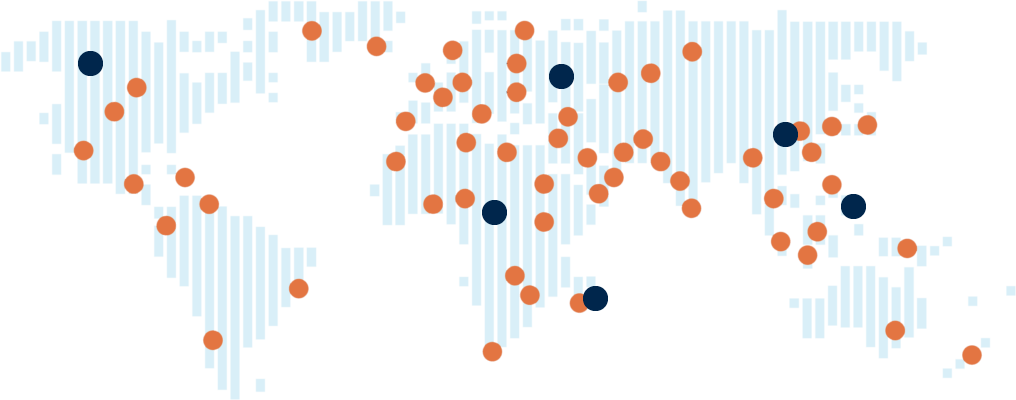GLOBAL GROWTH CONCERNS RETURN TO CENTRE STAGE
Global growth returned to the limelight, as the key reason for global investor sentiment to deteriorate. Truth be told, it is quite difficult to read anything positive into headlines without taking a closer look at the details – and we all know that markets sometimes tend to be superficial and ignore details. The headlines were the following:
- the NFP employment number in the US unexpectedly collapsed,
- the European Central Bank panicked and made a complete policy U-turn worrying that the Euro Area’s economy is on the brink of stagnation (did not dare to say the R word though),
- Chinese foreign trade surprised to the downside, as exports and imports contracted to a greater extent than expectations foresaw,
- scary Brexit-related headlines and its (assumingly) disastrous economic implications continue to weigh on market sentiment.

S&P 2,743 -2.16%, 10yr Treasury 2.65% -12.46bps, HY Credit Index 364 +23bps, Vix 16.27 +2.48Vol
Stock markets in the US had a rough week, as the majority of the broad indices declined: the S&P 500 lost 2.2% of its value, while the Nasdaq Composite fell 2.5%. From a sectoral point of view, healthcare and energy companies delivered the most underwhelming performance, while real estate and utilities held their own in a hectic environment. The broad dollar index (DXY) gained 0.8%, while the Treasury curve shifted downwards and somewhat flattened. Consequently, the 2-year yield eased 9bp to 2.46%, while the 10-year slipped 12bp to 2.63%, bringing the 2s10s spread to 17bp. Fed funds futures continue to imply a flat Fed funds policy rate throughout 2019 and firmly expect one 25bp rate cut somewhere along 2020.
The February jobs report delivered a mixed bag of figures that could definitely take some time to fully digest. Unemployment rate edged down by 0.2ppt to 3.8% in the context of stable labour force participation and wage growth strengthened, unexpectedly, to 3.4% YoY. Despite the aforementioned exceptionally strong labour metrics, not everybody was happy with the jobs report, since the most popular non-farm payroll employment (NFP) figure collapsed to 20K in February.
Looking forward: The US is set to publish a broad set of inflation metrics, such as the CPI and PPI, and a bunch of relevant macroeconomic data that capture the underlying health of the US’s domestic economy, e.g. retail sales, industrial production and capacity utilisation.

Eurostoxx 3,296 -1.95%, German Bund 0.07% -11.40bps, Xover Credit Index 287 -11bps, EURUSD 1.125 +1.11%
European stock markets declined across the board. The broad stock indices of the four largest Euro Area countries decreased. The loss expressed in USD terms was further amplified by the depreciation of the euro (1.1% vs. the USD), which was mainly due to the European Central Bank’s (ECB) worryingly dovish comments. Due to the ECB’s dovishness, sovereign yields declined and spreads, in general, tightened. As a result, the German 10-year decreased 11bp to 0.07%.
Although the ECB did not change its policy rates in line with expectations, the monetary authority’s stance has substantially changed, which caught the market off-guard. The ECB has finally admitted that the Euro Area’s economy is in worse shape than the central bank was previously willing to admit. In the context of the bleak(er) outlook, President Draghi announced a new set of liquidity-providing measures (i.e. TLTRO) and adjusted the forward guidance to a later date, i.e. no rate hike until the end of 2019.
Looking forward: Now that the ECB meeting is behind us, markets will digest President Draghi’s messages in the context of the latest industrial production and inflation data from the Euro Area.

HSCEI 1,127 -3.06%, Nikkei 2,112.00 –1.86%,10yr JGB -0.03% 0bps, USDJPY 111.250 -0.80%
The risk-averse global market sentiment weighed on Asian markets, which was well-reflected in the MSCI Asia Pacific ex. Japan index’s decline, by 2.1% in USD. South Korean (-3.8% in USD) and Chinese “H” shares (-3.1% in USD) fell to the greatest extent. Meanwhile, the Indian Nifty50 index soared, as the benchmark gained 3% in USD.
The Chinese government set the GDP growth target to the range of 6-6.5% for 2019. In order to achieve the growth target, the government announced further fiscal support to the domestic economy through the reduction of VAT. Furthermore, expenditures will be increased and restructured to grant targeted support to preferred industries. As a result, fiscal deficit will be higher in 2019 than in the year before.
The government took a step allowing itself greater flexibility in terms of economic policy in the context of a highly uncertain external environment. “Proactive” fiscal policy should ensure that the growth target is attainable.
Chinese foreign trade data from February may look scary at first sight, but they are not disastrous by any means. Exports contracted 20.7% YoY in February (vs. +9.1% YoY in January), while imports fell 5.2% YoY (vs. -1.5% YoY in January). According to the seasonally adjusted dataset, exports would have grown 1.5% YoY and imports 6.5% YoY – had it not been for temporary distortionary factors, such as the Chinese New Year.
South Korean inflation was 0.5% YoY in February, slowing from January’s 0.8% YoY. The slowdown in the headline index was induced by agricultural and marine products, while services prices inflation accelerated.
Headline CPI inflation in the Philippines slowed to 3.8% YoY in February (vs. 4.4% YoY in January) on the back of easing food (mainly rice) inflation. Meanwhile, core inflation slipped to 3.9% YoY. In a separate event, Budget Secretary Benjamin Diokno has been appointed as the new governor of the Philippine central bank, after Governor Espenilla had passed away on the 23rd February. The new governor is a respected technocrat, who would bring a greater understanding of the fiscal policy to the table.
It remains to be seen how Mr Diokno will manage monetary policy and whether he will tolerate higher inflation in exchange for higher GDP growth.
The Malaysian central bank kept the policy rate stable at 3.25%. The MPC reiterated downside risks stemming from the international trade tensions. Despite the external risks, the MPC sustained its GDP growth forecast and remained confident in the strength of domestic drivers, such as private sector spending.
The Sri Lankan Finance Minister presented the budget bill for 2019. The bill intends to bolster domestic consumption, incentivise private sector investment activity, while promoting a greater degree of fiscal discipline than before. The bill targets a deficit of 4.4% of GDP for 2019 (vs. 5.3% of GDP in 2018).
The bill aims to achieve various objectives that may be in conflict with the ideas of reducing expenditures and increasing tax revenues. As a result of these conflicts, the government might not be able to clamp down on the headline deficit in a meaningful way. Unless the government delivers on its promise, investor confidence is unlikely to return to the Sri Lankan financial markets in a sustained manner.
Looking forward: The Asian economic diary is filled with relevant macroeconomic data that could potentially swing market sentiment. India reveals its February inflation figure on Tuesday. Later, many countries, such as the Philippines, South Korea, Indonesia and India, are going to release their respective monthly foreign trade statistics. Meanwhile, China is set to publish its broad set of economic indicators.

MSCI Lat Am 2,729 -1.67%
Latin American stock markets had a challenging week, which was captured by the MSCI EM Latin America index falling 1.7% in USD. The Argentine broad stock index lost 5.6% of its value, followed by Mexico (-3.3% in USD) and Colombia (-2.4% in USD). Peru delivered the least weak performance, as the Peruvian index edged down only 0.5% in USD.
Headline CPI inflation in Mexico continued to ease, to 4% YoY in February from 4.4% in January. The sharp decline in the headline gauge was mainly driven by plummeting food prices (e.g. fruit, vegetables, etc.). Meanwhile core inflation decelerated to a smaller extent, by 0.1ppt to 3.5% YoY.
The monthly economic activity indicator (Imacec) in Chile signalled that activity strengthened 2.4% YoY in January, somewhat slower than in December. Growth was mainly driven by non-mining sectors, while mining activity decreased.
The Central Bank of Peru kept the policy rate at 2.75% in March. The MPC expects annual inflation around the 2% central bank target. In addition, members of the MPC believe that it remains appropriate to maintain an expansionary monetary policy, as inflation expectations remain anchored in a context of below-potential economic activity growth.
The Peruvian central bank is most likely to carry on with its tightening cycle this year. However, the timing and the number of hikes is probably going to be data dependent. Consequently, the combination of macro data and the MPC’s communication will provide guidance to the market.
Looking forward: The Latin American economic diary is filled with relevant monthly macroeconomic data. Such data are industrial production from Brazil, Mexico and Colombia.

MSCI Africa 775 -2.07%
African stock markets were a mixed bag. The Egyptian, Kenyan and Nigerian gained 1.5%, 0.4% and 0.3% (all in USD), respectively. In contrast with their performance, the South African market struggled, as the country’s stock index lost 2.6% of its value in USD.
The South African current account deficit narrowed to 2.2% of GDP in 4Q18 from 3.7% in the previous quarter. The improvement in the headline current account figure was driven by the trade account and income line. The detailed breakdown of the balance of payments is yet to be released. Overall, the current account deficit hit 3.5% of GDP for full-year 2018, 0.9ppt wider than a year before.
In the last quarter of 2018, South African real GDP grew 1.4% in seasonally adjusted annualised terms (SAAR), slightly exceeding the median market estimate. Services activity lost a meaningful portion of its growth momentum, as the sector’s growth in terms of real output fell by 1.2ppt to 1.7% SAAR in 4Q18. Meanwhile on the demand side, the contribution of net exports slightly improved. However, the improvement was more-than-offset by a large contraction in investments (-2.5% SAAR). Overall, the South African economy grew 0.8% in full-year 2018, considerably slower than in the previous year, when GDP growth was 1.4%.
Downside risks to South Africa’s economic growth will persist as long as power outages are not addressed. In addition, political and policy uncertainty weigh on private sector investment activity as well. After the elections are over, visibility on the policy front might improve, which in turn could potentially serve as a catalyst for a bounce in economic growth.
Morocco’s trade deficit rose to MAD 15.7bn (about USD 1.64bn) in January. The widening foreign trade deficit was primarily driven by fast-paced imports growing 7% YoY, while exports failing to keep up (+5.7% YoY). Meanwhile, FDI flows to the country plummeted 30.4% YoY to MAD 1.57bn and remittances severely dropped, 9.2% YoY to MAD 5.4bn. As a result of the widening trade deficit and the abating flows to Morocco, the country’s foreign exchange reserves fell 3% YoY to MAD 227.2bn – covering just about five months of imports.
Looking forward: The African economic diary is quite light for the week. South Africa will release manufacturing data, while Nigeria is set to reveal inflation and credit growth metrics.
This week’s global market outlook is powered by Alquity www.alquity.com




